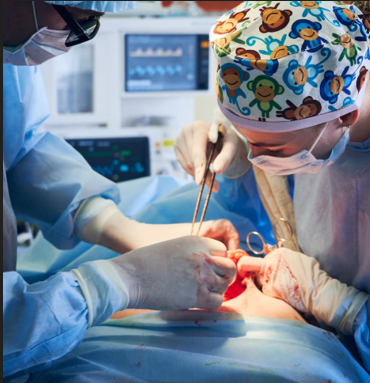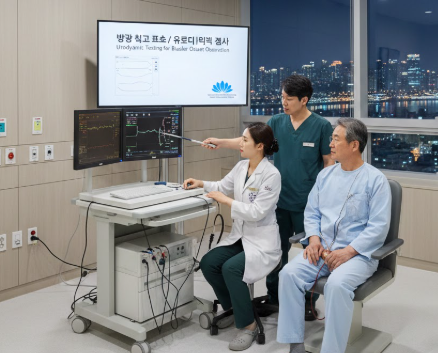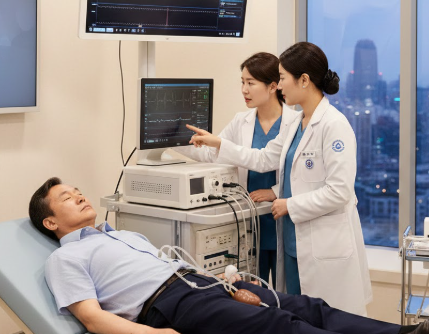Treatment Overview
Laser-Assisted Fibroid Removal Surgery in Korea is an advanced, minimally invasive procedure designed to remove uterine fibroids with exceptional precision and safety. This innovative technique combines laser energy with laparoscopic surgery to ensure complete removal of fibroid tissue while preserving uterine health and function. Korea is internationally recognized for pioneering such gynecologic innovations, offering patients access to world-class facilities, specialized surgeons, and tailored treatment plans.
Uterine fibroids — benign growths of muscular tissue in the uterus — are one of the most common gynecological conditions, affecting millions of women worldwide. They can cause heavy menstrual bleeding, pelvic pain, infertility, and pressure symptoms on nearby organs. Laser-assisted removal provides a highly effective solution that minimizes surgical trauma and enhances recovery, making it an attractive option for women seeking a modern alternative to conventional fibroid surgery.
Leading medical centers in Korea, including Samsung Medical Center, Asan Medical Center, Severance Hospital, CHA Bundang Women’s Hospital, and Ewha Womans University Mokdong Hospital, have adopted laser-assisted fibroid excision as a standard offering in fibroid management. These hospitals combine cutting-edge technology with a multidisciplinary approach to deliver optimal outcomes.
Purpose & Benefits
The purpose of laser-assisted fibroid removal surgery is to provide women with a safe, effective, and minimally invasive option for fibroid excision. By utilizing laser technology, surgeons can achieve superior precision, reduced bleeding, and enhanced uterine preservation.
Key benefits include:
- High Precision: Laser technology allows targeted excision of fibroid tissue with minimal damage to surrounding healthy tissue.
- Reduced Blood Loss: Laser coagulates blood vessels during surgery, decreasing bleeding significantly.
- Minimally Invasive: Smaller incisions lead to less pain, reduced scarring, and faster healing.
- Preservation of Fertility: The uterus remains intact, preserving reproductive capability.
- Faster Recovery: Many patients resume normal activities within 1–2 weeks.
- Minimal Scarring: Laser-assisted surgery improves cosmetic outcomes.
- Shorter Hospital Stay: Most procedures require only a brief hospital stay.
Korean hospitals integrate this approach with personalized patient care, ensuring each surgery is adapted to the patient’s needs and medical condition.
Ideal Candidates
Laser-assisted fibroid removal surgery is ideal for women who require precision fibroid removal and wish to preserve uterine health. Candidates include:
- Women experiencing heavy menstrual bleeding, pelvic pain, or pressure symptoms due to fibroids.
- Patients with fibroids of varying size or location requiring precise excision.
- Women who wish to preserve fertility.
- Patients seeking minimally invasive surgery with shorter recovery.
- Women who prefer tailored surgical solutions designed for optimal outcomes.
Before surgery, Korean hospitals conduct thorough evaluations, including high-resolution ultrasound, MRI scans, and laboratory tests, to customize the surgical plan.
Possible Risks & Complications
While laser-assisted fibroid removal is generally very safe, patients should be aware of possible risks:
- Bleeding: Rare but possible in cases involving large or vascular fibroids.
- Infection: Low risk due to sterile surgical protocols.
- Adhesion Formation: Reduced compared to traditional surgery but still possible.
- Damage to Surrounding Organs: Rare due to the precision of laser technology.
- Fibroid Recurrence: Possible but minimized through complete excision.
Korean medical teams mitigate these risks with careful surgical planning, state-of-the-art technology, and strict postoperative monitoring.
Techniques Used
Laser-assisted fibroid removal in Korea employs a combination of innovative techniques for maximum precision and safety:
- Laparoscopic Laser Myomectomy: Integrates laparoscopy with laser energy for targeted fibroid removal.
- Ultrasonic Guidance: Provides real-time imaging for accurate localization and excision.
- Energy-Based Laser Systems: Enable precise cutting with coagulation to reduce blood loss.
- Single-Port Laser Surgery: Minimizes incisions for faster recovery and better cosmetic outcomes.
- Precision Suturing: Maintains uterine integrity and promotes optimal healing.
These methods ensure a patient-specific approach that delivers superior surgical results.
Recovery & Aftercare
Recovery following laser-assisted fibroid removal in Korea is typically faster and more comfortable than with traditional surgery. Most patients resume normal activities within one to two weeks, with reduced postoperative pain and scarring.
Aftercare includes:
- Postoperative monitoring of uterine healing.
- Pain management tailored to the individual.
- Lifestyle recommendations to support recovery.
- Fertility counseling for women planning pregnancy.
- Follow-up imaging to confirm successful excision and monitor recurrence.
Korean hospitals emphasize comprehensive aftercare, ensuring patients receive both medical and emotional support during recovery.
Results & Longevity
Laser-assisted fibroid removal offers durable relief from symptoms and preserves reproductive health. Korean hospitals report high success rates and patient satisfaction, with reduced recurrence compared to traditional surgical methods.
Long-term outcomes include improved menstrual health, reduced pelvic discomfort, and enhanced fertility potential. Patients benefit from shorter recovery periods and better quality of life.
Treatment Process in Korea
- Consultation: In-depth review of medical history, symptoms, and imaging results.
- Preoperative Planning: Personalized surgical plan tailored to fibroid size, location, and patient goals.
- Surgical Procedure: Minimally invasive laparoscopic laser-assisted removal of fibroids.
- Recovery: Structured postoperative care and monitoring.
- Follow-Up: Imaging and consultations to ensure healing and uterine health.
Korean hospitals ensure this process is efficient, patient-focused, and designed for maximum safety and comfort.
Cost Range
Costs for laser-assisted fibroid removal surgery in Korea depend on procedure complexity and hospital reputation:
- Laparoscopic Laser Myomectomy: ₩7,000,000 – ₩12,000,000 KRW ($5,200 – $9,000 USD)
- Robotic Laser-Assisted Myomectomy: ₩10,000,000 – ₩15,000,000 KRW ($7,500 – $11,300 USD)
- Single-Port Laser Surgery: ₩8,500,000 – ₩14,000,000 KRW ($6,400 – $10,500 USD)
These prices reflect Korea’s cutting-edge surgical technology, exceptional expertise, and holistic patient care.
Popular Clinics for Laser-Assisted Fibroid Removal Surgery in Korea
- Samsung Medical Center – Leaders in laser-assisted minimally invasive gynecologic surgery.
- Asan Medical Center – Renowned for precision robotic and laparoscopic laser myomectomy.
- Severance Hospital – Experts in fertility-preserving fibroid excision.
- CHA Bundang Women’s Hospital – Pioneers in customized laser surgery approaches.
- Ewha Womans University Mokdong Hospital – Integrates advanced laser technology with comprehensive women’s care.




